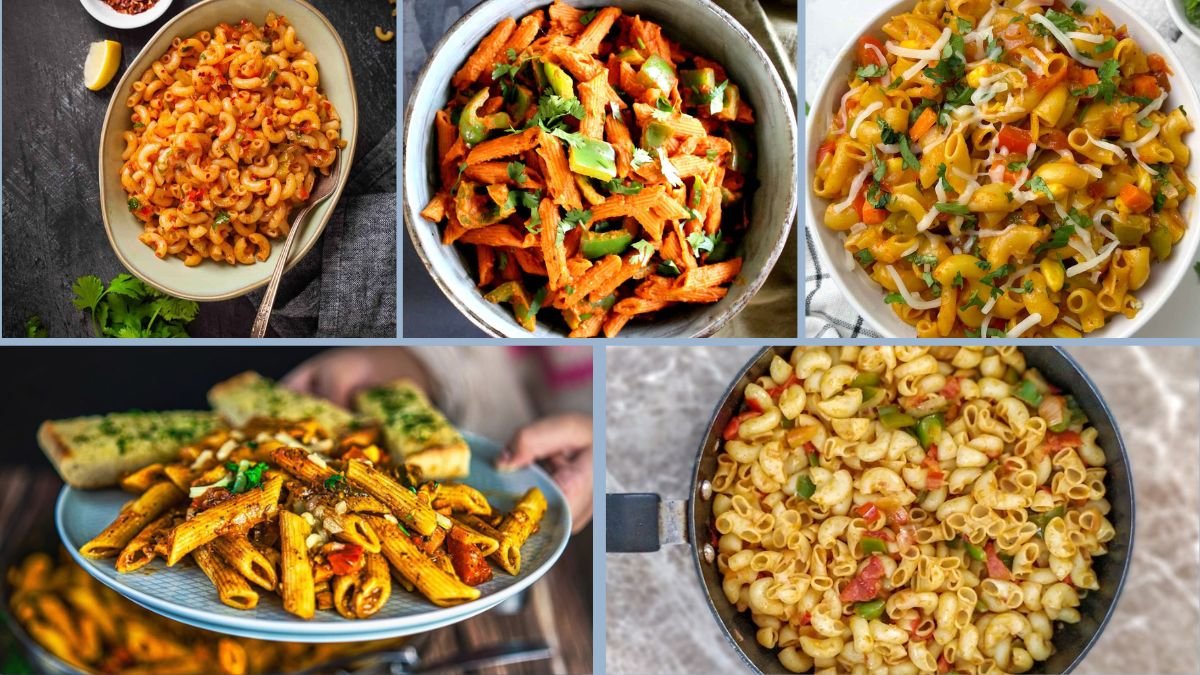Pasta is a globally beloved dish, renowned for its versatility and comforting flavors. Traditionally Italian, pasta has evolved into countless variations worldwide, adapting to local tastes and ingredients. One such exciting fusion is Vegetable Pasta with Desi Masala, where the classic pasta meets the rich, vibrant spices of Indian cuisine.
This dish is not only delicious but also packed with nutrients, offering a healthy, vegetarian-friendly meal option. It combines wholesome vegetables, fiber-rich pasta, and aromatic desi masalas, resulting in a unique culinary experience that is perfect for a nutritious lunch or dinner.
In this article, we present a 6-step easy guide to prepare vegetable pasta infused with Indian spices, without any non-vegetarian ingredients. This method is designed for both home cooks and researchers interested in culinary fusion and healthy cooking.
Why Choose Vegetable Pasta with Desi Masala?
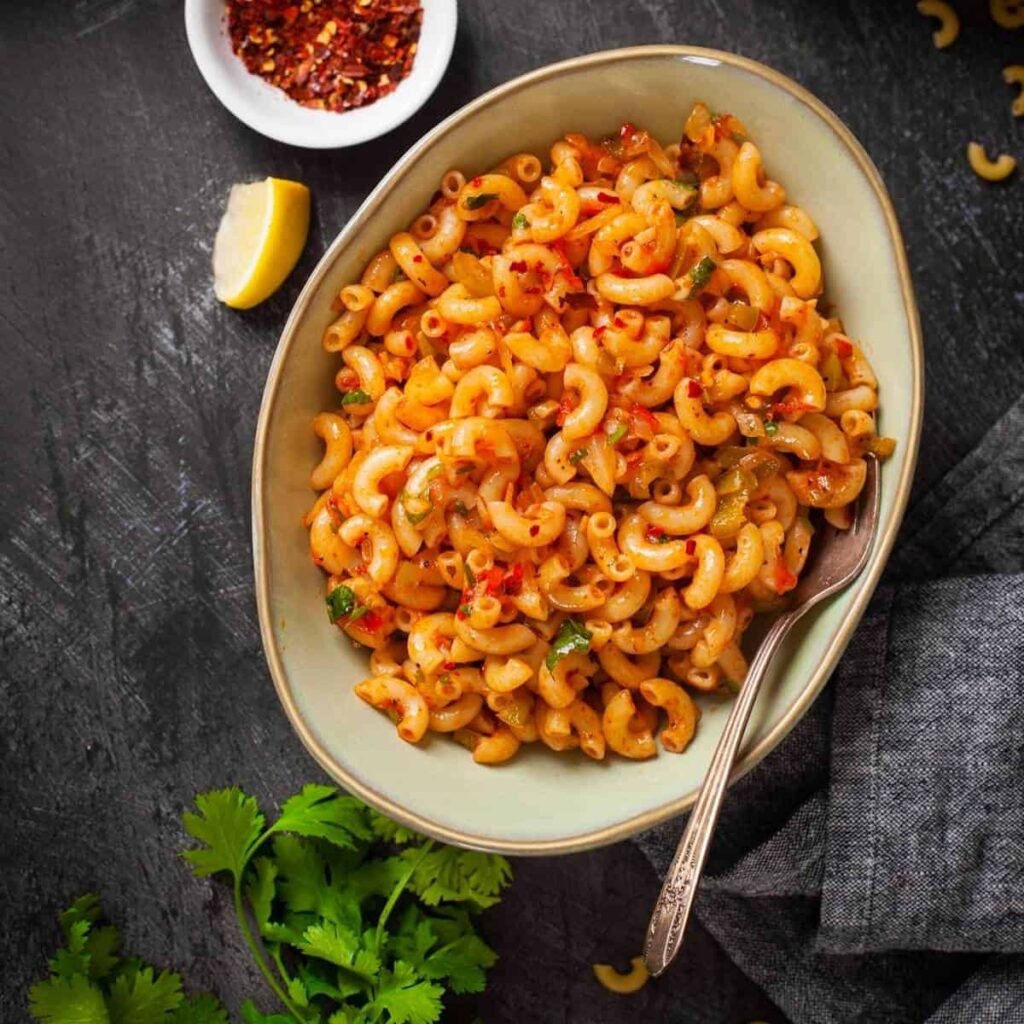
- Nutritional Benefits: Incorporating vegetables enhances fiber, vitamins, and minerals. Pasta provides complex carbohydrates for sustained energy. The desi masalas add antioxidants and anti-inflammatory compounds.
- Vegetarian & Healthy: This recipe contains no meat or dairy-based cream, making it suitable for vegetarians and those seeking low-fat meals.
- Flavorful Fusion: The combination of Italian pasta texture and Indian masala spices creates a delightful new taste profile.
- Simple & Quick: Using common kitchen ingredients, this recipe is easy to prepare and ideal for busy lifestyles.
- Customizable: You can swap or add vegetables and adjust spice levels to your preference.
Ingredients Overview
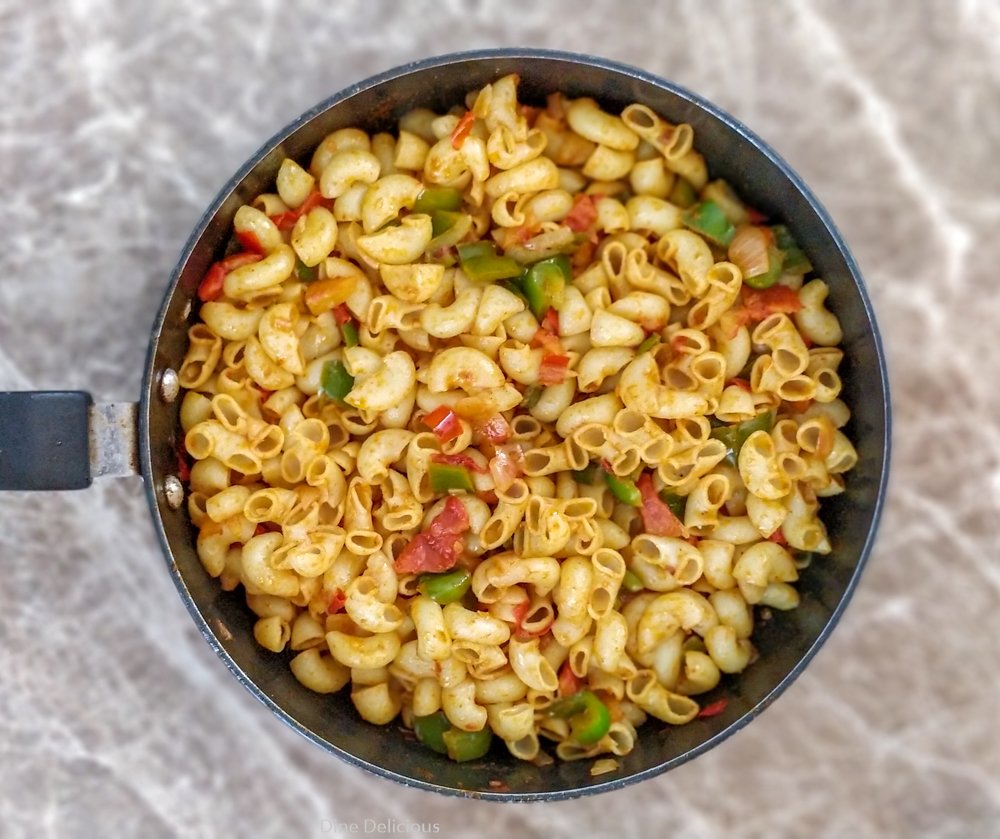
Before starting, gather the following ingredients:
| Ingredient | Quantity | Notes |
|---|---|---|
| Pasta (penne/spaghetti) | 200 grams | Whole wheat or regular, as preferred |
| Mixed vegetables | 1.5 cups | Carrots, bell peppers, beans, peas, corn |
| Onion | 1 medium | Finely chopped |
| Tomato | 2 medium | Pureed or finely chopped |
| Ginger-garlic paste | 1 tbsp | Freshly prepared |
| Green chili | 1 small (optional) | Chopped, for heat |
| Cooking oil | 2 tbsp | Vegetable, olive, or mustard oil |
| Mustard seeds | ½ tsp | For tempering |
| Cumin seeds | ½ tsp | For tempering |
| Turmeric powder | ¼ tsp | Adds color and health benefits |
| Red chili powder | ½ tsp | Adjust according to heat preference |
| Coriander powder | 1 tsp | Earthy spice |
| Garam masala | ½ tsp | Aromatic Indian spice blend |
| Fresh coriander leaves | A handful | Chopped for garnish |
| Salt | To taste | |
| Water | As needed | For cooking pasta and making gravy |
Step 1: Prepare the Pasta
- Boil Water: Bring a large pot of salted water to a rolling boil.
- Cook Pasta: Add pasta to boiling water and cook according to package instructions until al dente (usually 8–10 minutes for penne).
- Drain & Set Aside: Drain the pasta, reserving a small cup of pasta water for later use. Set the cooked pasta aside.
Tip: Cooking pasta al dente helps maintain firmness and prevents mushiness during mixing.
Step 2: Chop and Prepare Vegetables
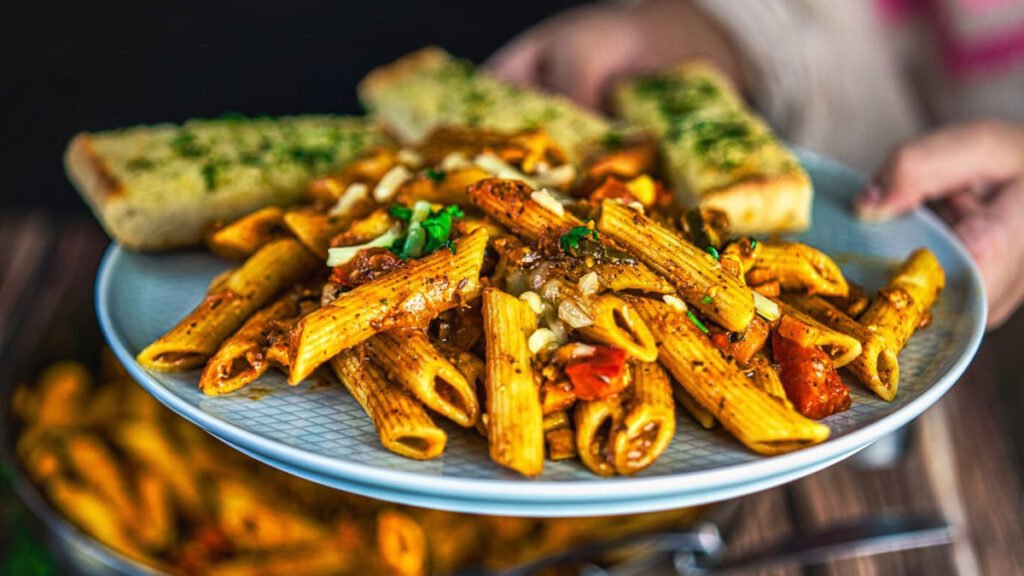
Select fresh vegetables rich in color and texture to enhance the dish:
- Carrots: peeled and diced or julienned
- Bell peppers (capsicum): diced (use a mix of colors for vibrancy)
- Green beans: chopped into 1-inch pieces
- Green peas or sweet corn: fresh or frozen, rinsed
Wash, peel, and chop vegetables uniformly for even cooking.
Step 3: Temper Spices & Sauté Aromatics
Tempering spices releases their essential oils and flavors, forming the base of the masala.
- Heat oil in a wide pan or skillet over medium heat.
- Add mustard seeds and cumin seeds; allow them to splutter.
- Add finely chopped onions and sauté until golden brown.
- Add ginger-garlic paste and chopped green chili; sauté for 1–2 minutes until aromatic.
This step sets the tone for the flavor profile.
Step 4: Prepare Desi Masala Base
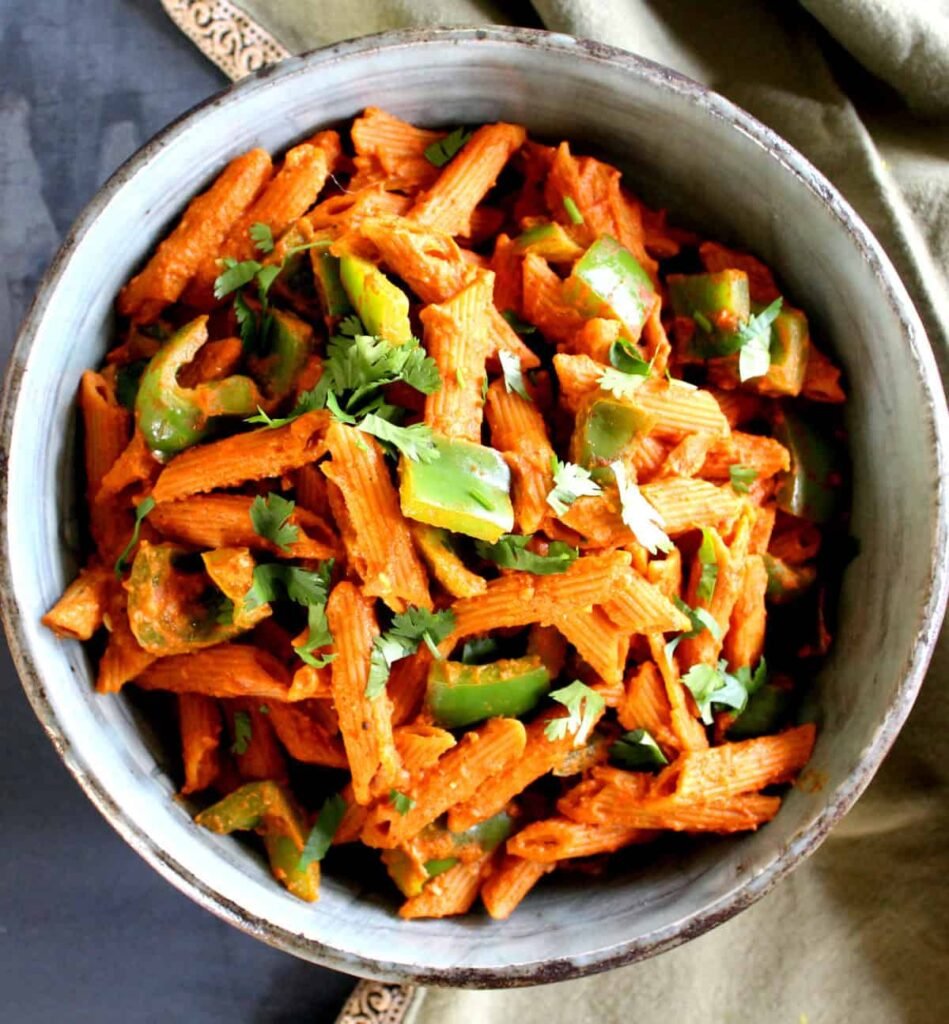
- Add the chopped or pureed tomatoes to the sautéed aromatics.
- Stir in turmeric powder, red chili powder, coriander powder, and salt.
- Cook until oil starts to separate from the masala, about 5–7 minutes, stirring occasionally.
- Add the chopped vegetables, mix well, and cover the pan.
- Cook the vegetables over medium heat for 7–8 minutes, stirring occasionally, until tender but still slightly crunchy.
If the mixture becomes too dry, add a few tablespoons of water to maintain a saucy consistency.
Step 5: Combine Pasta and Masala
- Add the cooked pasta into the pan with the vegetable masala mixture.
- Toss gently to coat the pasta evenly with the masala and vegetables.
- Add a splash of reserved pasta water to loosen the mixture if needed.
- Sprinkle garam masala and fresh coriander leaves; mix well and cook for another 2 minutes to blend flavors.
The pasta should be well coated with the spicy, flavorful masala and vegetables.
Step 6: Final Garnish & Serve
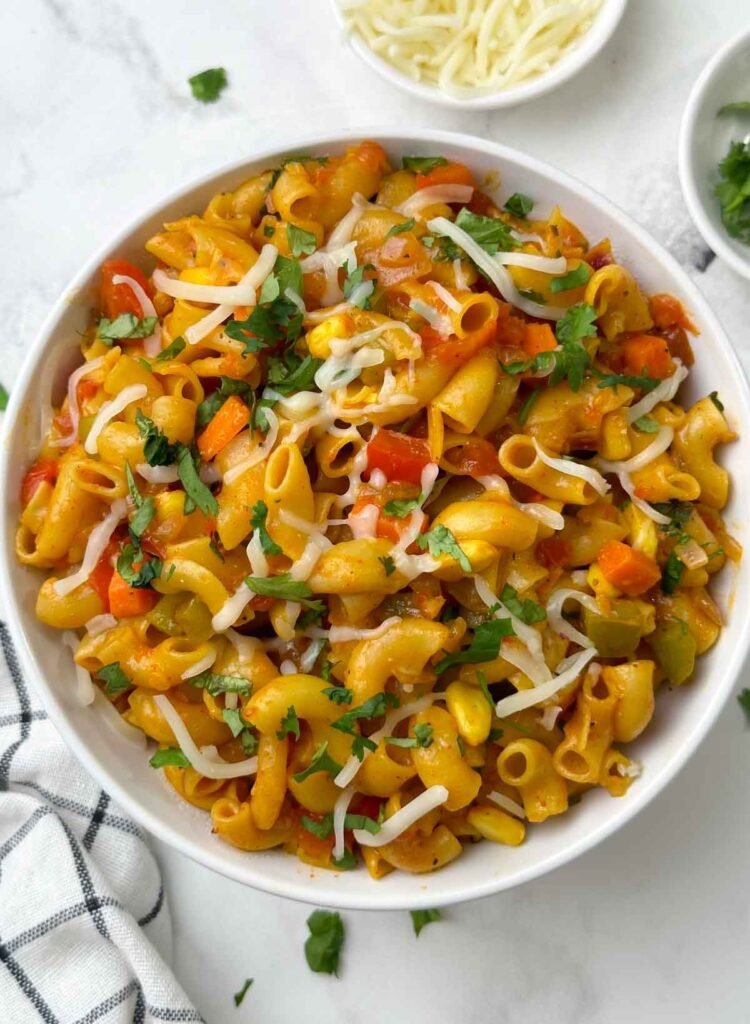
- Turn off the heat and garnish with additional fresh coriander leaves.
- Serve hot as a wholesome and vibrant meal.
Pair with a side of plain yogurt or a simple salad for a balanced and complete vegetarian meal.
Nutritional Benefits
- High Fiber: From whole wheat pasta and vegetables.
- Rich in Vitamins & Minerals: Thanks to the diverse vegetable mix and spices.
- Protein Source: Pasta and legumes in vegetables offer moderate plant protein.
- Low Fat: Using minimal oil and no cream ensures a heart-healthy dish.
- Antioxidants & Phytochemicals: Turmeric, garlic, ginger, and other spices contribute health-promoting properties.
Conclusion
This 6-step recipe for Vegetable Pasta with Desi Masala is an excellent example of culinary fusion that bridges the gap between Italian staples and Indian flavors. The dish is not only flavorful and colorful but also packed with nutrition, making it an ideal vegetarian main course.
Through simple preparation and common ingredients, this recipe demonstrates how traditional Indian spices can elevate everyday pasta into a wholesome meal without animal products or cream. Its balance of carbohydrates, fiber, vitamins, and antioxidants supports healthy eating habits and offers a fresh alternative for those seeking innovative vegetarian dishes.
This guide can also serve as a foundation for further research in food science, nutrition, and culinary arts, exploring the benefits of fusion cooking and its impact on dietary patterns.
